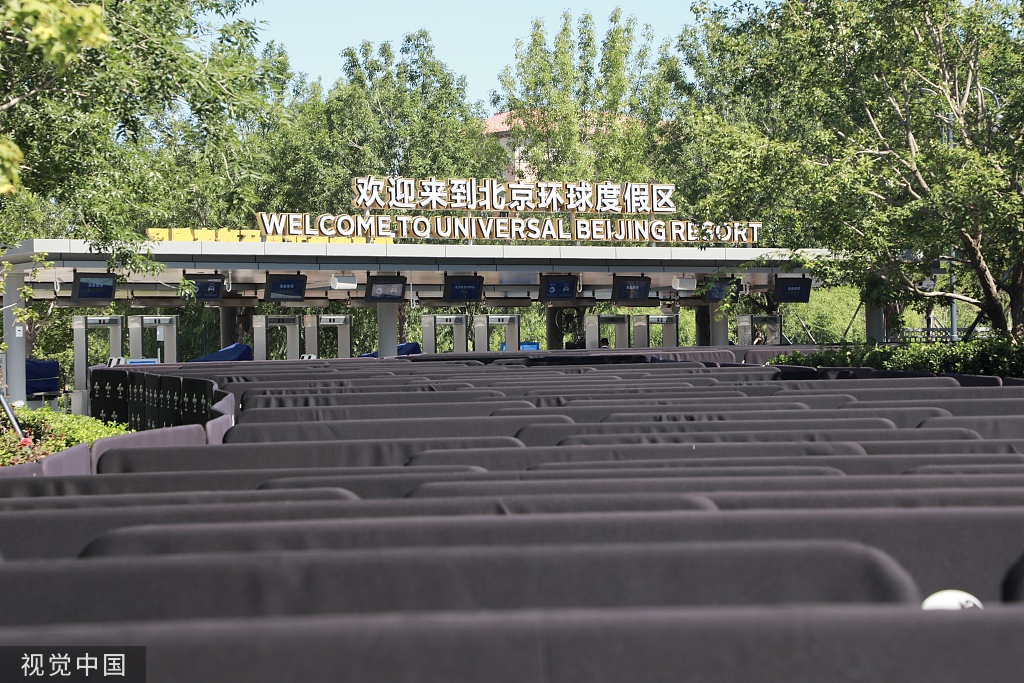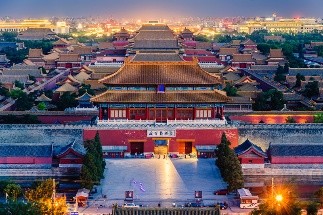Different Route for Different View of the Palace Museum
When people visit the Palace Museum, they often follow this route: Meridian Gate (Wu Men) -- Hall of Supreme Harmony (Taihe Dian) -- Palace of Heavenly Purity (Qianqing Gong) -- Palace of Earthly Tranquility (Kunning Gong) -- Six Eastern Palaces -- Six Western Palaces -- Imperial Garden (Yu Huayuan). Today, we'd like to lead you to visit the Palace Museum through a different route.

Exhibitions are often held in the halls at the Meridian Gate (Wu Men); check in advance if you are interested. After entering the Meridian Gate (Wu Men), turn right to pass through the Gate of Blending Harmony (Xiehe Men) before heading north. This will bring you to the Martial Gallery (Wubei Guan). Then go through the Gate of Conferring Blessings (Xiqing Men) to the Treasure Gallery (Zhenbao Guan).

The Treasure Gallery (Zhenbao Guan), sited within the Palace of Tranquil Longevity (Ningshou Gong), displays, as its name suggests, a variety of ceremonial utensils, sacrificial vessels, crowns and clothing, ornaments, articles for daily use, and palace furnishings, made of gold, silver, jade, and other precious stones.
Going through the Gate of Steadfast Loyalty (Zhenshun Men) situated at the north side of the Palace of Tranquil Longevity (Ningshou Gong), and heading west, will then bring you to the Gate of Loyal Obedience (Shunzhen Men) which leads to the Imperial Garden (Yu Huayuan). Entering the Imperial Garden (Yu Huayuan) through the east side of the Gate of Loyal Obedience (Shunzhen Men), you will be met by several pavilions, including the Pavilion of Myriad Springtimes (Wanchun ting).
Entering the Six Eastern Palaces through the south gate of the Bower of Crimson Snow (Jiangxue Xuan), which currently serves as the Palace Museum cultural products store, you can first visit the Palace of Accumulated Purity (Zhongcui Gong). The Palace of Accumulated Purity (Zhongcui Gong) is the only place in the Palace Museum where Guqin is exhibited, making it a paradise for lovers of these instruments.
Near the Palace of Accumulated Purity (Zhongcui Gong) is the Palace of Great Brilliance (Jingyang Gong), which is not open currently. Further south is the Palace of Celestial Favour (Chengqian Gong). South of the Palace of Celestial Favour (Chengqian Gong) is the Palace of Great Benvolence (Jingren Gong). And near that is the Palace of Prolonging Happiness (Yanxi Gong). The only western-style architecture in the Palace Museum, the Palace of Prolonging Happiness (Yanxi Gong) is "unique" in its appearance.

After touring the Six Eastern Palaces, you can return to the Palace of Earthly Tranquility (Kunning Gong), before touring the central axis of the Palace Museum in reverse. The Palace of Heavenly Purity (Qianqing Gong) and the Palace of Earthly Tranquility (Kunning Gong) were the bedrooms of the imperial consorts. In the Qing Dynasty, the Palace of Earthly Tranquility (Kunning Gong) was not only the bridal chamber of the emperor and the empress, but also an important place of sacrifice. Passing through the Gate of Heavenly Purity (Qianqing Men), from north to south, you will see the Hall of Preserving Harmony (Baohe Dian), Hall of Central Harmony (Zhonghe Dian), and Hall of Supreme Harmony (Taihe Dian). If you're tired after touring the central axis of the Palace Museum, you could go through the right hand gate of the Hall of Supreme Harmony (Taihe Dian), to arrive at the Ice Houses (Bingjiao). Once the ice store of the Imperial Palace, it is now one of the restaurants in the Palace Museum, where, apart from meals, you can also sample the Palace Museum sorbet.
The Palace of Compassion and Tranquility (Cining Gong) and Palace of Longevity and Health (Shoukang Gong) are to the north of the Ice Houses (Bingjiao). The former now houses a long-term exhibition of sculptures from different dynasties. After leaving the Palace of Compassion and Tranquility (Cining Gong), you will arrive at the the Six Western Palaces. Passing the Hall of the Supreme Principle (Taiji Dian) and Palace of Eternal Longevity (Yongshou Gong), you will arrive at the Palace of Earthly Honor (Yikun Gong) and Palace of Gathered Elegance (Chuxiu Gong). Entering the Imperial Garden (Yu Huayuan) again from the Palace of Gathered Elegance (Chuxiu Gong), you will see the Pavilion of One Thousand Autumns (Qianqiu ting). The Pavilion of One Thousand Autumns (Qianqiu ting) and Pavilion of Myriad Springtimes (Wanchun ting) stand at either side of the Imperial Garden (Yu Huayuan), in which over 160 ancient trees, most over 300 years old, can be seen.
Leaving the Imperial Garden (Yu Huayuan), you will have almost finished your tour of the Palace Museum. Despite the longer time required to follow this route, it has the major advantage of allowing guests who can rarely visit the Palace Museum to tour as many of its open areas as possible.
(Note: Content source is from Beijing Tourism.)



